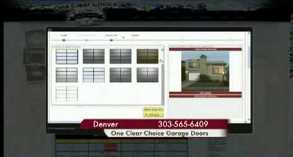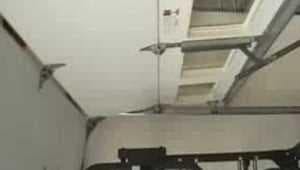The electric garage door opener was invented by a man named C.G. Johnson in 1926, and since then, garage door openers have been offering homeowners and renters – anyone who has a garage attached to their house – a great deal of ease and convenience that probably goes largely unappreciated. You don’t really notice how much you rely on something until it stops working properly. Unfortunately, garage door openers do malfunction occasionally, and when they do, you need answers quickly. Here are some common issues with garage door openers and tips on how to solve the issues.
Garage Door Opener Troubleshooting Tips
Determine if the problem is really with the opener or with the door itself.
Do a visual examination of the door’s springs, lift cables, rollers, hinges, and track. Look for any sign of warping, tearing, or breaking. If there is nothing that seems out of order, you can also try putting the door in manual operation mode by pulling the disconnect cord. IMPORTANT: Make sure your door is already closed when you do this. Then try to manually open your garage door. It should be able to be lifted without too much force and then hold itself open. If all of these check out, you can move on to troubleshooting the opener, because this is most likely the problem.
Is it electrical, mechanical, or a safety feature problem?
Now that you have narrowed it down to a problem with the opener, there are three main areas of concern: electrical, mechanical, and safety feature.
Garage Door Opener Electrical Issue
Sometimes the issue may be simply one of having no power. First, make sure there is power to the outlet where your garage door opener is plugged in (plug in something else electrical, like a lamp, and see if it turns on). If there is no power, then you might have an internal electrical problem such as circuit board or motor start capacitor. If your garage door opener stops working the day after a storm, chances are your opener could have a circuit board that failed. Garage door openers are extremely sensitive to power surges. Protect yourself and install an inexpensive surge protector.
Garage Door Opener Mechanical Issue
To see if the problem is mechanical, check the motor unit itself. Look under the lens cover for the light, where most openers have an open and close force adjustment dial. In some cases where there have been weather changes or door wear, adjustments to this setting need to be made, and can be done so with a small screwdriver or with your finger. Your opener manufacturer should have a manual on their website with further instructions to make these adjustments.
Garage Door Opener Safety Features Issue
The next thing to check would be your garage door’s safety features. Oftentimes, if a garage door will not close all the way before it heads back up, it’s a safety device error. Try pushing your wall button down and holding it to force a close, and see if the light on the opener is flashing. This usually indicates a safety device problem. Once the door is closed you can let go of the button and begin to research the problem. The first place to look is your photo eye sensors to see if they are damaged or out of alignment. If the light is blinking the eyes are probably misaligned. If there is no light, check for frayed wires or loose connections. Call a professional to fix your safety eyes immediately.
Other Garage Door Opener Issues Such as Drive Gear and Travel Carriage
There are other more complex issues that could be going on with your automatic garage door opener such as with the drive gear or travel carriage, if you’ve ruled out all of the above. Life expectancy is also a factor.
WARNING: Garage doors are heavy and have complex spring and cable systems. Please call a professional for maintenance and repairs to your garage door. We do NOT recommend doing it yourself – serious injury or death can result. If you need immediate assistance, call us 303.565.6409 and we will have a technician out usually the same day. We serve all of the Front Range and Denver Metro areas, from Colorado Springs all the way up to Fort Collins.
You might also be interested in:
Common Garage Door Problems










